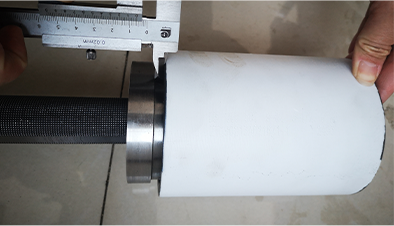- Afrikaans
- Albanian
- Amharic
- Arabic
- Armenian
- Azerbaijani
- Basque
- Belarusian
- Bengali
- Bosnian
- Bulgarian
- Catalan
- Cebuano
- Corsican
- Croatian
- Czech
- Danish
- Dutch
- English
- Esperanto
- Estonian
- Finnish
- French
- Frisian
- Galician
- Georgian
- German
- Greek
- Gujarati
- Haitian Creole
- hausa
- hawaiian
- Hebrew
- Hindi
- Miao
- Hungarian
- Icelandic
- igbo
- Indonesian
- irish
- Italian
- Japanese
- Javanese
- Kannada
- kazakh
- Khmer
- Rwandese
- Korean
- Kurdish
- Kyrgyz
- Lao
- Latin
- Latvian
- Lithuanian
- Luxembourgish
- Macedonian
- Malgashi
- Malay
- Malayalam
- Maltese
- Maori
- Marathi
- Mongolian
- Myanmar
- Nepali
- Norwegian
- Norwegian
- Occitan
- Pashto
- Persian
- Polish
- Portuguese
- Punjabi
- Romanian
- Russian
- Samoan
- Scottish Gaelic
- Serbian
- Sesotho
- Shona
- Sindhi
- Sinhala
- Slovak
- Slovenian
- Somali
- Spanish
- Sundanese
- Swahili
- Swedish
- Tagalog
- Tajik
- Tamil
- Tatar
- Telugu
- Thai
- Turkish
- Turkmen
- Ukrainian
- Urdu
- Uighur
- Uzbek
- Vietnamese
- Welsh
- Bantu
- Yiddish
- Yoruba
- Zulu
pipe mill
The Evolution and Significance of Pipe Mills
In the world of manufacturing, pipe mills play a crucial role in the production of various metal pipes used in a multitude of applications. The history of pipe mills dates back to the Industrial Revolution, marking a significant evolution in both technology and manufacturing processes. Today, they stand as a testament to advancements in engineering, material science, and automated manufacturing, contributing substantially to industries ranging from construction and automotive to oil and gas.
Historical Background
The inception of pipe mills can be traced to the late 18th century, when innovations in metallurgy and mechanical engineering enabled the mass production of iron and steel pipes. Initial methods involved manual labor and rudimentary machinery, limiting production efficiency. However, as industrialization spread, so did the need for more effective manufacturing techniques. This need led to the development of various types of pipe production methods, including seamless and welded pipes, which significantly improved the quality and durability of pipes.
Modern Manufacturing Techniques
Today, pipe mills utilize advanced technologies such as continuous casting, hot rolling, and cold drawing to produce pipes of varying specifications. The manufacturing process generally begins with the selection of raw materials, primarily steel, which is then heated and shaped into pipes through a series of machines.
1. Hot Rolled Pipes In the hot rolling process, steel billets are heated to high temperatures and then passed through rollers to form seamless or welded pipes. This method is particularly effective for creating larger diameter pipes and is widely used in industries requiring high strength and durability.
2. Cold Drawn Pipes The cold drawing process involves reducing the diameter of the pipe at room temperature, which increases the pipe's tensile strength and produces a smoother finish. Cold-drawn pipes are ideal for architectural and structural applications where precision and aesthetics are paramount.
pipe mill

3. Welding Techniques For welded pipes, various welding techniques such as submerged arc welding (SAW) and gas tungsten arc welding (GTAW) are employed. These methods ensure strong and durable seams in pipe lengths, allowing for the production of pipes with varying thicknesses and diameters.
Automation and Quality Control
The integration of automation and robotics has significantly transformed the operation of pipe mills
. Automated machinery can operate at high speeds while maintaining precision, reducing human error and improving safety levels. Additionally, modern pipe mills employ sophisticated quality control systems that utilize data analytics to monitor the manufacturing process in real-time. This ensures that the final products meet stringent international standards and specifications, crucial for industries such as oil and gas, where pipeline integrity is paramount.The Impact on Global Industries
The significance of pipe mills extends beyond mere manufacturing; they are integral to various sectors of the economy. In the oil and gas industry, for example, pipelines are essential for transporting resources from extraction points to processing facilities. The demand for high-quality pipes has led to continuous improvements in manufacturing processes, enabling the construction of pipelines that can withstand high pressure and extreme temperatures.
In construction, the versatility of pipes manufactured in pipe mills facilitates a wide array of applications, from plumbing systems to structural elements. Moreover, advances in material science have introduced new types of pipes, such as those made from composite or PVC materials, broadening the scope of modern construction practices.
Conclusion
In conclusion, pipe mills are an essential component of the manufacturing landscape, reflecting both historical advancements and contemporary innovations. The evolution from manual methods to automated processes illustrates the industry's responsiveness to growing demands for efficiency, quality, and durability. As global industries continue to expand, the role of pipe mills will only grow in importance, underpinning the infrastructure that supports modern civilization. With ongoing advancements in technology and material science, the future of pipe mills promises to be even more dynamic and impactful.
-
Tubing Pup Joints: Essential Components for Oil and Gas OperationsNewsJul.10,2025
-
Pup Joints: Essential Components for Reliable Drilling OperationsNewsJul.10,2025
-
Pipe Couplings: Connecting Your World EfficientlyNewsJul.10,2025
-
Mastering Oilfield Operations with Quality Tubing and CasingNewsJul.10,2025
-
High-Quality Casing Couplings for Every NeedNewsJul.10,2025
-
Boost Your Drilling Efficiency with Premium Crossover Tools & Seating NipplesNewsJul.10,2025







